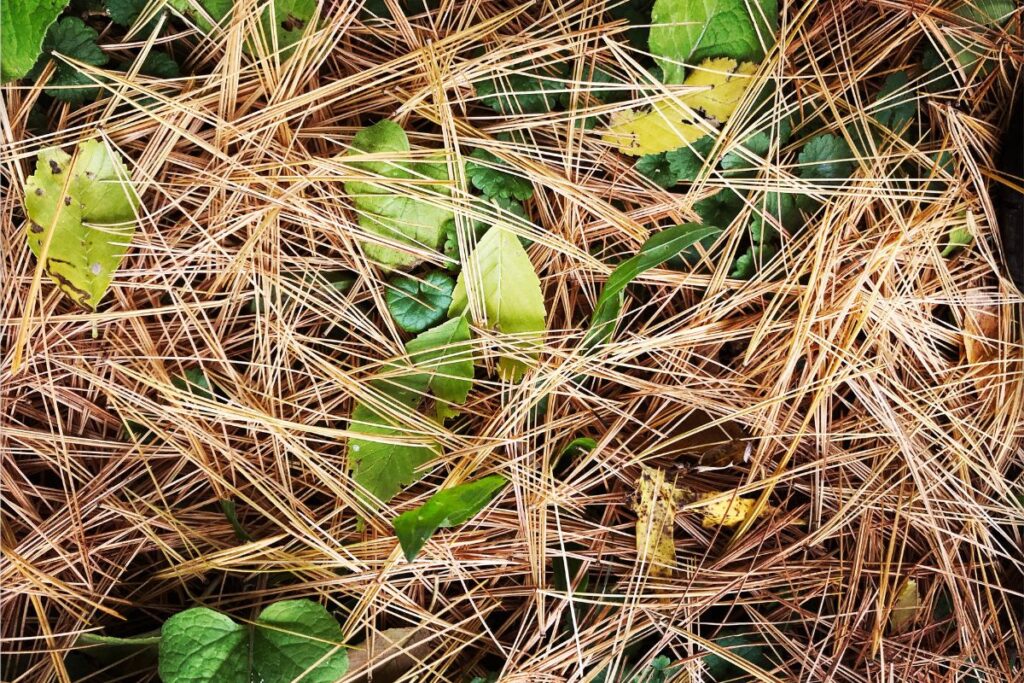Disclaimer: Our editors have used AI to create or enhance parts of this article and some images. All content has been fact-checked by our team to ensure accuracy.
Wondering about using pine needles as mulch?
It’s a common question for gardeners.
Discover the benefits and drawbacks of using pine needles in your garden.
Curious to know if they’re right for you?
Let’s dive in!
Quick Overview

Pine needle mulch is an excellent choice for vegetable plots and other gardening areas, especially when you aim to slightly increase the acidity of the soil. It effectively limits weed proliferation, retains soil moisture, and maintains soil temperature. One of the standout advantages of using pine needles as mulch is their longevity; they decompose at a gradual pace, which means you typically need to replenish them only annually.
Detailed Overview

Pine needles are an outstanding mulching material for various landscapes. Here are some factors to help you determine if they are suitable for your garden!
Benefits
Utilizing pine needles as a mulch offers several perks for both contained and open-earth plantings. Their resilience means an annual application suffices. Nutrient addition to the soil from these needles enhances its quality and lessens the necessity for synthetic weed barriers. The airy nature of pine needles prevents compaction, promoting exceptional water and airflow, yet still diminishing moisture evaporation to decrease irrigation demands. Furthermore, this option is cost-effective in pine-rich areas. Erosion mitigation, temperature moderation, weed suppression, and fostering a healthy soil ecosystem are some of the other noteworthy benefits.
Drawbacks
However, the availability of pine needles can be limited if pine trees are sparse in your region, requiring the exploration of alternative mulching materials such as homemade leaf mulch. Another potential concern is their distinct coloration, which might not align with every gardener’s aesthetic preference.
Impact on Soil pH
Contrary to popular belief, pine needles won’t significantly alter your soil’s acidity. During decomposition, microbes neutralize the needles’ inherent acidity, leaving the soil pH nearly unchanged. This dispels the myth that they are suitable only for acid-loving plants, allowing their use universally across your garden without pH concerns.
Choosing Pine Needles
Regardless of the pine species, the needles are generally uniform in their beneficial properties. The primary distinction lies in their length, with varieties like ponderosa exhibiting longer needles that are more easily harvested. Collecting these needles requires minimal effort; simply rake them from the ground beneath the pine trees once they’ve naturally dropped. Transport and distribute the needles across your garden to enjoy their advantages.
Application Method
When applying pine straw mulch, a layer of 2-3 inches is optimal for sustaining your garden’s health. This depth is sufficient to deter weed growth, maintain soil moisture balance, and regulate temperature fluctuations that plants may encounter throughout the year.
The prime period to lay down pine straw mulch is spring, as this timing helps prevent the onset of new weeds and prepares the soil for the coming seasons. As pine straw decomposes gradually, it remains effective through the warm summer months and into winter, providing year-round benefits.
It’s advisable to distribute the pine needles after your flowers and vegetables are in the soil. This technique avoids any potential disruption of laying down mulch around newly planted areas. Should you prefer to mulch in advance, planting can follow; just ensure to gently clear a space for each plant.
Layer the pine straw by hand or use a hay fork for even spreading. If proper thickness is maintained, reapplication of pine straw is typically only necessary once annually, simplifying garden maintenance.
If using baled pine straw, a single bale can cover an area of approximately 40 square feet. This estimation helps in planning the quantity needed for your gardening space. By adhering to these straightforward steps, you can protect your plants and cultivate a robust garden with minimal effort.
Conclusion
Utilize fallen pine needles in your vicinity as mulch without hesitation. This resource is cost-effective and brings the same benefits to your garden as any organic mulch does. Dismiss any concern about soil acidification due to pine needles; your flora will remain unharmed. The efficiency of pine straw as mulch is comparable to other materials, ensuring a thriving garden ecosystem.
- Cost: Inexpensive
- Benefits: Comparable to other organic mulches
- Soil Impact: Neutral pH; no acidification
- Plant Health: Unaffected; secure